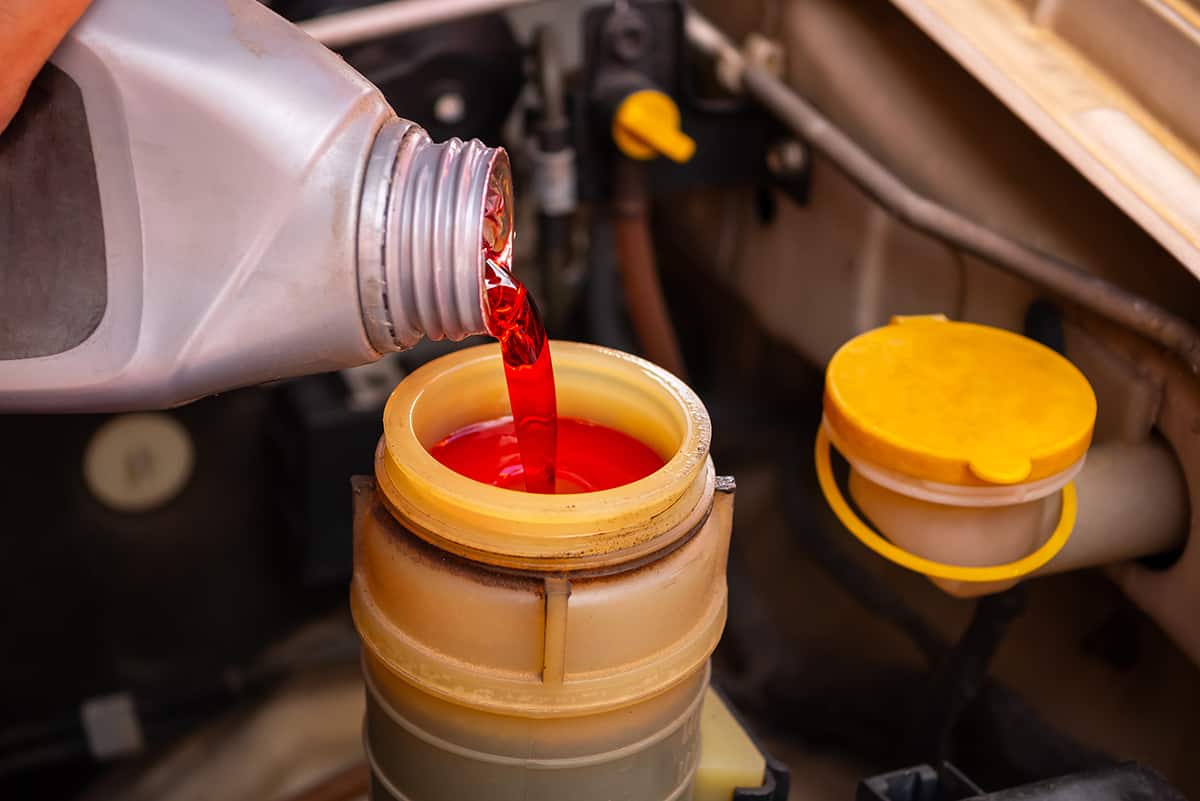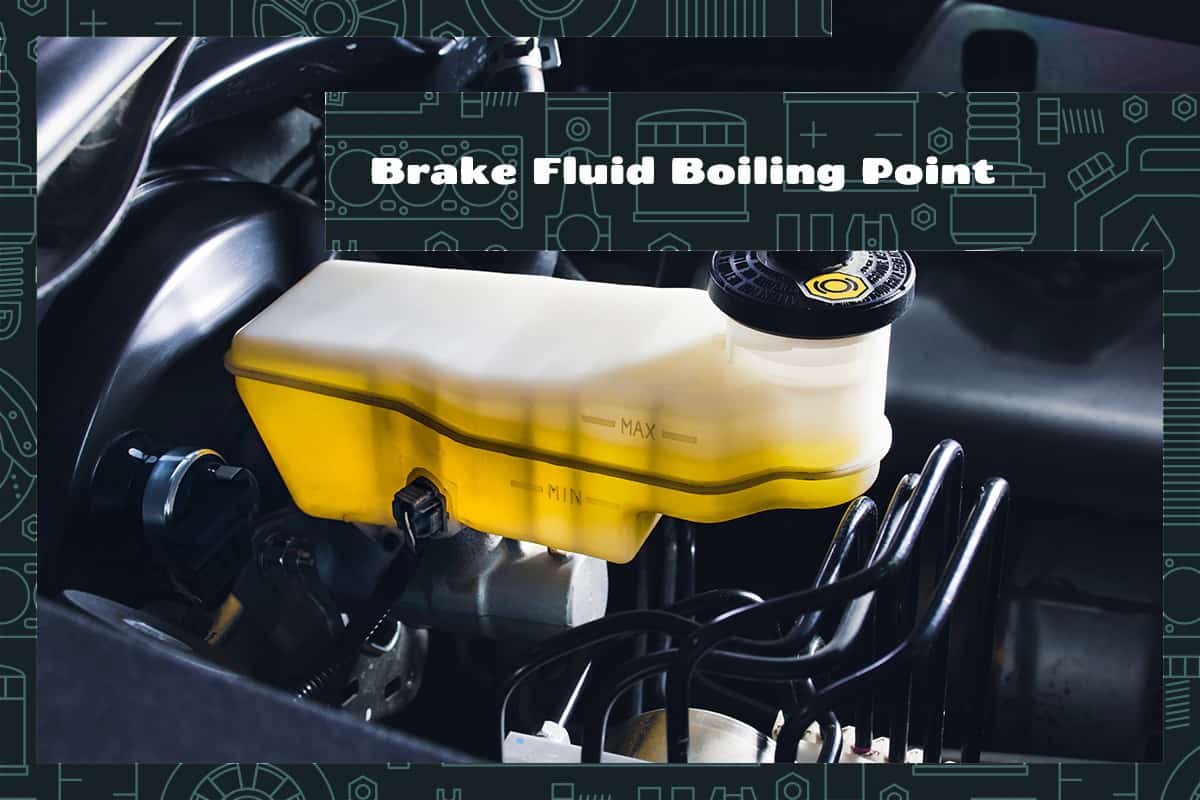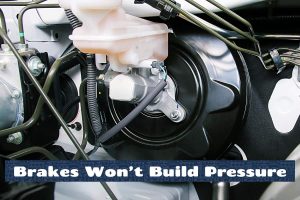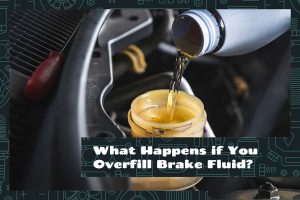The role of brake fluid in a vehicle’s braking system is to ensure a safe and controlled driving experience. Often overlooked, the brake fluid’s boiling point plays a critical role in maintaining optimal braking performance, as it directly impacts the overall system’s functionality.
Typical boiling points for brake fluid are as follows:
DOT 3 Brake Fluid:
- Dry Boiling Point: 205°C (401°F)
- Wet Boiling Point: 140°C (284°F)
DOT 4 Brake Fluid:
- Dry Boiling Point: 230°C (446°F)
- Wet Boiling Point: 180°C (356°F)
DOT 5.1 Brake Fluid:
- Dry Boiling Point: 260°C (500°F)
- Wet Boiling Point: 190°C (374°F)
In this guide, we’ll look at the concept of brake fluid boiling point, its importance, how it impacts your vehicle’s performance, and ways to maintain it effectively.
Basics of Brake Fluid

Brake fluid is a non-compressible substance that resides within your car’s brake lines, enabling the transfer of force from a driver’s foot on the brake pedal directly to the car’s brakes. It serves as a conduit for this force, which means that any change in brake fluid condition can influence the effectiveness of your brakes.
This fluid is specially formulated to have high boiling points, low freezing points, and resistance to corrosion. It’s also designed to lubricate movable parts, inhibit rust, and maintain its properties across a wide range of temperatures, ensuring your brakes work efficiently, whether it’s a chilly winter morning or a hot summer day.
But the role of brake fluid isn’t limited to transferring force. It also serves to lubricate the moving parts of the brake system, reducing wear and tear and extending the system’s lifespan. Furthermore, it helps to prevent corrosion inside the brake system, as it contains anti-corrosion additives. This is crucial, as a corroded brake system can lead to brake failure.
Introduction to Boiling Points
In the context of automotive technology, particularly relating to brake fluids, the boiling point is intrinsically connected to the efficiency and safety of your vehicle’s braking system.
In general terms, the boiling point of a substance is the temperature at which it changes from a liquid state to a gas. This transformation happens when the vapor pressure of the substance equals the atmospheric pressure surrounding it. The key factor here is that at the boiling point, a liquid can form vapor that can be sustained, causing the formation of bubbles within the liquid mass.
Now, what does this mean for your brake fluid? As a hydraulic fluid, brake fluid needs to remain in a liquid state to function properly. When brake fluid reaches its boiling point and starts to gasify, it forms bubbles in the brake system, an occurrence known as vapor lock. This significantly reduces braking efficiency and can potentially lead to brake failure.
The Significance of Boiling Point in Brake Fluid
As you drive and apply the brakes, friction generates heat, causing the temperature in the brake system to rise. If the brake fluid’s temperature exceeds its boiling point, the fluid will start to boil and vaporize. Remember that gases are compressible, contrary to liquids. So, when your brake fluid vaporizes, it introduces compressibility into your brake system. As a result, your brake pedal may feel spongy, and the vehicle may not stop as efficiently or, potentially, not stop at all.
Brake fluids are categorized into dry and wet boiling points. The dry boiling point refers to the boiling point of fresh, brand-new brake fluid straight out of the bottle. The wet boiling point is lower, as it refers to the boiling point of brake fluid that has absorbed a certain amount of water (usually about 3.7%).
Brake Fluid Ratings and Specifications
Brake fluid classifications are determined by their physical properties, most notably their boiling points, and are represented by their Department of Transportation (DOT) ratings.
DOT Ratings and Boiling Points
Each DOT rating is associated with specific minimum boiling point values. These ratings are designed to ensure that brake fluids can perform adequately under varying operating conditions.
- DOT 3: This brake fluid is glycol-based and is used widely in many passenger vehicles. DOT 3 brake fluid has a minimum dry boiling point of 205°C (401°F) and a minimum wet boiling point of 140°C (284°F).
- DOT 4: Also glycol-based, DOT 4 brake fluid is typically used in performance or heavy-duty vehicles due to its higher boiling points. The minimum dry boiling point for DOT 4 fluid is 230°C (446°F), and the wet boiling point is 180°C (356°F).
- DOT 5: DOT 5 brake fluid is silicone-based and does not absorb water, setting it apart from DOT 3 and DOT 4. It has a high dry boiling point of 260°C (500°F) but is not commonly used in conventional passenger vehicles because it can lead to inconsistent braking under certain conditions.
- DOT 5.1: This brake fluid is glycol-based like DOT 3 and DOT 4 but has the highest boiling points. The minimum dry boiling point is 270°C (518°F), and the wet boiling point is 190°C (374°F). DOT 5.1 brake fluid is designed for high-performance and heavy-duty applications.
Symptoms of Boiled Brake Fluid

Brake fluid boils when it reaches its boiling point due to excessive heat in the brake system, usually from intense or prolonged braking. When brake fluid boils, it creates gas bubbles within the system. As gas is compressible, unlike liquid brake fluid, these bubbles reduce the hydraulic pressure transmitted through the brake lines, resulting in decreased braking efficiency, also known as “brake fade.”
While diagnosing boiled brake fluid without professional tools can be challenging, certain signs can indicate this condition:
- Spongy or Soft Brake Pedal: If your brake fluid has boiled and created gas bubbles, the first symptom you’ll likely notice is a spongy or soft brake pedal. This is because the gas bubbles compress under pressure, unlike the brake fluid, leading to a less firm pedal feel.
- Decreased Braking Power: Boiled brake fluid can lead to diminished braking performance or “brake fade.” This can be particularly noticeable during downhill driving or after repeated hard braking when the brake system’s temperature tends to rise significantly.
- Longer Stopping Distances: As the effectiveness of your brakes decreases due to boiled brake fluid, you may notice that your vehicle takes longer than usual to stop.
- ABS (Anti-lock Braking System) Warning Light: In some vehicles, the ABS warning light on your dashboard might illuminate if your brake fluid has boiled.






